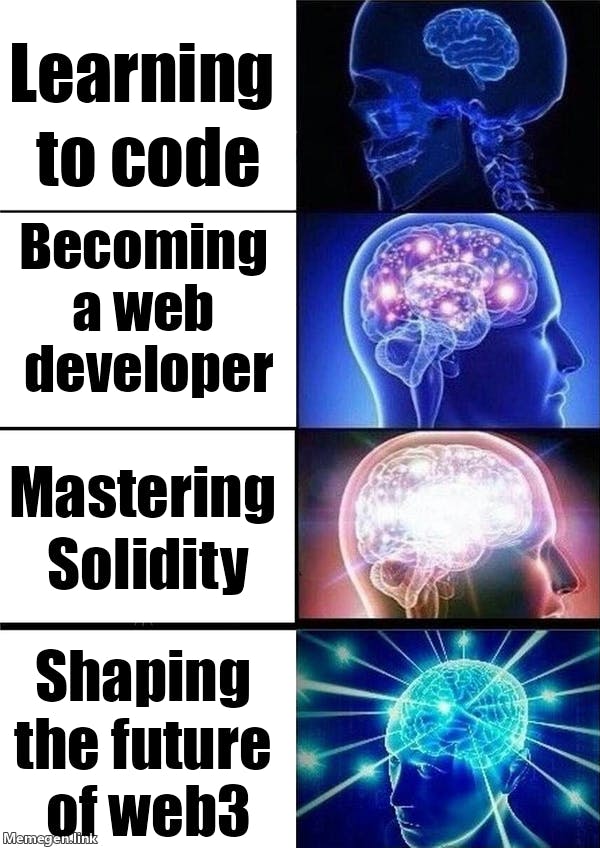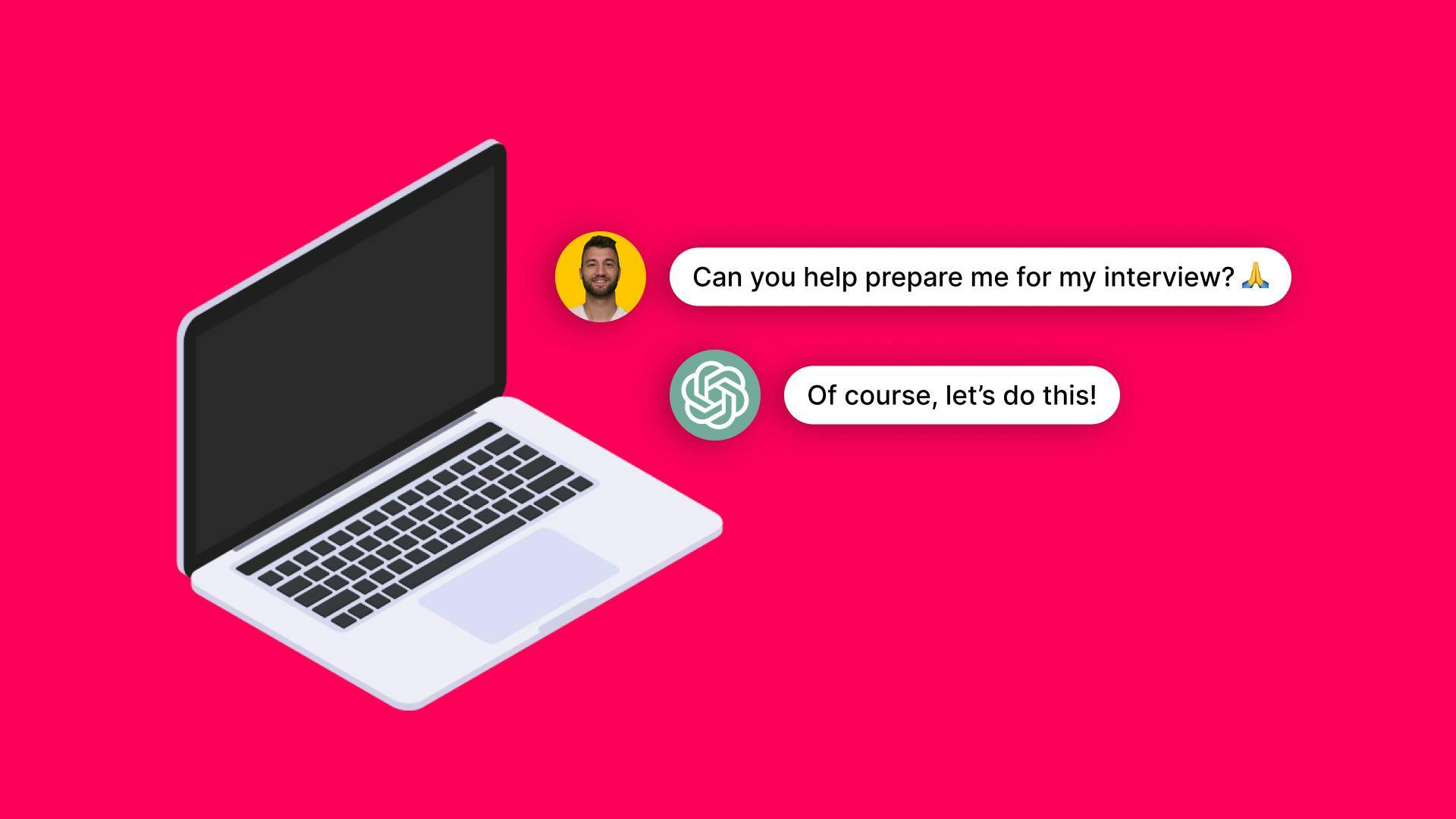The Ultimate Guide - Becoming a Solidity Engineer
As the digital world continues to evolve, the demand for developers who can navigate the complex landscape of blockchain technology will continue to be on the rise. One of the most sought-after skills in this domain is proficiency in Solidity, the primary programming language for writing smart contracts on the Ethereum blockchain. This article aims to provide an in-depth guide on how to become a full-stack Solidity developer, detailing the skills you need, the resources you can use, and the steps you can take to achieve this goal.
Why Solidity?
Becoming a blockchain developer, specifically a Solidity developer, allows you to contribute to the web3 landscape, shaping the future of the internet. This could prove to be both impactful and lucrative, especially as the technology becomes more practical in consumer and industrial settings.
According to Metaintro, the average base salary for Solidity developers in the US is $127,500, with a low base salary of $80,000 and a high base salary of $180,000. This figure might differ based on location, company, and experience.
The Path to Mastery
Becoming a full-stack Solidity developer involves a combination of learning the fundamentals of Solidity, gaining hands-on experience, and understanding the broader web3 ecosystem. Here are the steps you can take to achieve this:
1. Understand the Basics of Blockchain and Ethereum
Before diving into Solidity, it's crucial to have a solid understanding of blockchain technology and Ethereum. You should familiarize yourself with the workings of the Ethereum blockchain, the concept of smart contracts, and the difference between mainnet and testnet.
Resources like Blockchain Basics can provide a comprehensive introduction to these topics.
2. Learn Solidity Fundamentals
Once you have a grasp of blockchain and Ethereum, you can start learning Solidity. Solidity is an object-oriented programming language used for writing smart contracts on Ethereum. Its syntax is similar to JavaScript and C++, which makes it easier for web2 developers to learn.
You can start by reading the Solidity documentation, which provides a detailed guide on the language, including example code. You can also use resources like Solidity by Example for practical learning.
3. Practice Writing Smart Contracts
The best way to learn is by doing. Start by writing simple smart contracts and gradually move on to more complex ones. You can use online IDEs like Remix for this purpose.
You can also refer to this collection of practice projects to get started.
4. Understand Error Handling and Debugging
While writing smart contracts, you'll inevitably encounter errors. Understanding how to handle these errors and debug your contracts is a crucial skill.
You can use the [Remix IDE Debugger](https://remix-ide.readthedocs.io/en
5. Use Development Tools and VSCode Plugins
There are several tools and plugins that can make Solidity development more user-friendly. For instance, Hardhat is a development environment for Ethereum that allows you to compile, deploy, test, and debug your Solidity code.
VSCode plugins like Solidity Visual Developer and Solidity Contract Flattener can also enhance your development experience.

6. Work on Real-world Projects
After mastering the basics and getting comfortable with writing and debugging smart contracts, it's time to apply your skills to real-world projects.
You can start by building simple dApps like a decentralized bank or a token launch platform. As you gain more experience, you can move on to more complex projects like building a decentralized exchange or a price oracle.
Here are some project ideas to get you started:
- Simple bank (customers, withdrawals, deposits)
- Launch your own coin. Also, practice minting and burning.
- Launch your own NFT. Also, practice minting and burning.
- Create a Funding Smart Contract (freecodecamp)
- Build a Russian Roulette App.
- Build a staking contract.
- Sending Notifications using ECM.
- Merkle Tree Project1 & Merkle Tree Project2
You can also refer to this collection of dApp practical tutorials for more project ideas.
7. Understand Standard Smart Contracts
There are several standard smart contracts that are widely used in blockchain development. These contracts are secure, thoroughly tested, and can save you a lot of time.
You should have a deep understanding of these contracts, including:
- ERC20 Tokens (For coins and tokens)
- ERC721 Tokens (For NFTs)
- ERC1155 Tokens (For NFTs)
- UniswapV2Pair.sol (Important Contracts)
- GovernerAlpha.sol (Important Contracts)
- MasterChef.sol (Important Contracts)
You can refer to this article for more information on these contracts.
8. Learn Web Development (React, TypeScript)
To become a full-stack Solidity developer, you also need to be proficient in web development. This involves learning languages like React and TypeScript, which are commonly used for building the frontend of dApps.
You can use resources like React documentation and TypeScript documentation to get started.
9. Learn to Use web3 Libraries
web3 libraries like ethers.js and web3.js allow you to interact with Ethereum blockchain from your JavaScript app. These libraries are essential for building dApps, so you should familiarize yourself with them.
10. Participate in Hackathons and Bounty Programs
Participating in hackathons and bounty programs is a great way to gain hands-on experience and network with other developers. For the most part, every major web3 conference has a hackathon in conjunction with it. Just Google "web3 hackathon" and you'll see a bunch of different events pop up. (PRO TIP - put hackathons and bounties on your resume!).
11. Apply for Jobs and Update Your Resume
Once you've gained enough experience and built a portfolio of projects, you can start applying for Solidity developer jobs. You can find job listings on web3 job boards like.... Metaintro :)
When applying for jobs, make sure to update your resume and LinkedIn profile to highlight your Solidity skills and projects. You should also include any certifications you've earned and any hackathons or bounty programs you've participated in.
12. Join the metaintro Community
Finally, consider joining the metaintro Discord and subscribing to the metaintro newsletter. The metaintro community is a great place to network with other Solidity developers, learn about new job opportunities, and stay up-to-date on the latest web3 and AI news.
By following these steps, you can become a proficient Solidity developer and contribute to the exciting world of web3. Remember, the journey to becoming a Solidity developer is a marathon, not a sprint. Take your time, keep learning, and don't be afraid to ask for help when you need it.
Good luck!





